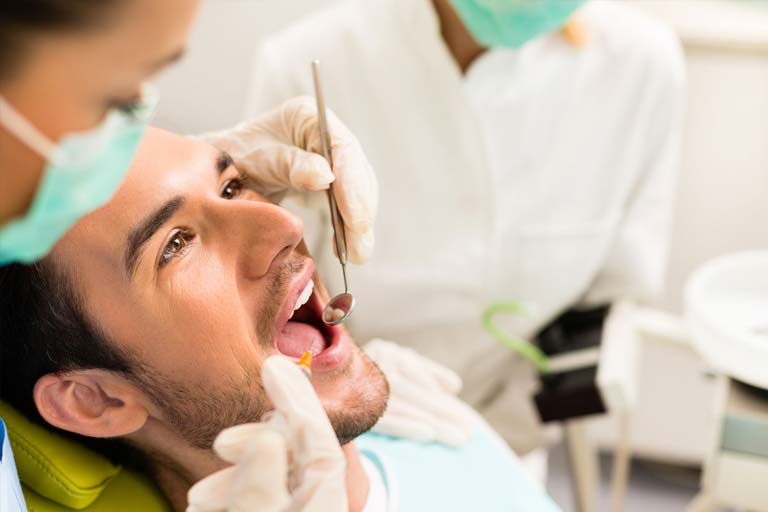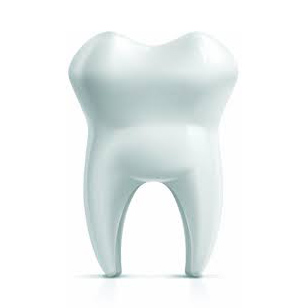 Oral Surgery
Oral Surgery
A tooth extraction may sound like a daunting proposition, but the treatment is more routine than its name implies. This procedure is performed by an experienced dentist at our South Florida practice and the recovery process is among the most comfortable.
Extractions
Extractions are performed for a wide variety of reasons, but most commonly to remove teeth which have become unrestorable through tooth decay, periodontal disease or dental trauma, especially when they are associated with toothache.
Tooth extraction is usually relatively straightforward, and the vast majority can be usually performed quickly while the individual is awake by using local anesthetic injections to eliminate painful sensations. Local anesthetic blocks pain.
Some teeth are more difficult to remove for several reasons, especially related to the tooth’s position, the shape of the tooth roots and the integrity of the tooth. Immediately after the tooth is removed, a bite pack is used to apply pressure to the tooth socket and stop the bleeding. After a tooth extraction, dentists usually give advice which revolves around not disturbing the blood clot in the socket by not touching the area with a finger or the tongue, by avoiding vigorous rinsing of the mouth and avoiding strenuous activity. Sucking, such as through a straw, is to be avoided. If the blood clot is dislodged, bleeding can restart and may be very painful.
Wisdom Teeth Extractions
Wisdom teeth are the last teeth to erupt within the mouth. When they align properly and gum tissue is healthy, wisdom teeth do not have to be removed. Unfortunately, this does not generally happen. The extraction of wisdom teeth is necessary when they are prevented from properly erupting within the mouth. They may grow sideways, partially emerge from the gum, and even remain trapped beneath the gum and bone. Impacted teeth can take many positions in the bone as they attempt to find a pathway that will allow them to successfully erupt.
Plasma Rich in Growth Factor (PRGF)
What is PRGF?
PRGF (Plasma Rich in Growth Factors) is based on the activation of the patient’s own platelets for the stimulation and acceleration of tissue healing and regeneration.
The latest advances in medicine are increasingly leading to the adoption of new minimally invasive therapies and procedures. In this respect, PRGF has opened new paths and therapeutic approaches thanks to its accessibility and reparative capacity.
PRGF is applicable in many fields of medicine, where its high level of efficiency in the regeneration of different tissues has been proven: bone, skin, oral mucosa, tendons, ligaments, muscles, cartilage, cornea, covering all medical specialties such as: oral and maxillofacial surgery, orthopedics and sports medicine, dermatology, ophthalmology, vascular surgery, plastic and cosmetic surgery and even veterinary surgery.
Way to Smile Dental and Dr Paola Wainberg already have experience of successfully using the PRGF technique alongside implant therapy and bone remodeling in their oral surgery treatments. In all cases there has been improved healing and bone regeneration.
Bone Graft
Most dental bone grafting procedures are done to restore your bone to its previous form following tooth loss, gum disease or trauma. Bone grafting may also be used to maintain bone structure after tooth extraction.
Restoring and maintaining facial bone structure is important for several reasons. Many dental procedures, such as dental implant placement, require that the bone be as close to its original dimension and position as possible for optimal results. Also, the jaw and other facial bones support the skin and muscle that are responsible for our outward cosmetic appearance. Without the support of the underlying bone, our faces can look prematurely aged.
Reasons for Tooth Extraction
 A teeth requires extraction for various reasons. This can be due to severe tooth decay, for preventing infections, and improving dental health. Impacted, malfunctioning, or crowding may also be reasons for a tooth extraction.
A teeth requires extraction for various reasons. This can be due to severe tooth decay, for preventing infections, and improving dental health. Impacted, malfunctioning, or crowding may also be reasons for a tooth extraction.
Tooth Extraction Procedure
The entire procedure will last only a few minutes. X-rays will have already been taken before the procedure. The tooth, gum, and bone will be anesthetized using a local numbing agent. Nitrous oxide is also available to manage anxiety during the procedure. The extraction itself will not produce any pain, but pressure. Tooth removal can be generally carried out with applied pressure instead of surgical procedures.After an extraction has been performed, the extraction site must be cared for during the next few days. The gauze should be left on the extraction site for the first few hours. Medication may also be prescribed depending on the type of procedure performed. The gums will heal within weeks and the missing teeth can be replaced with a denture or dental implant.
Contact Us Today!
We encourage you to contact our dental office today to learn more about Oral Surgery and to discover how we can care for your smile. We look forward to seeing you!

